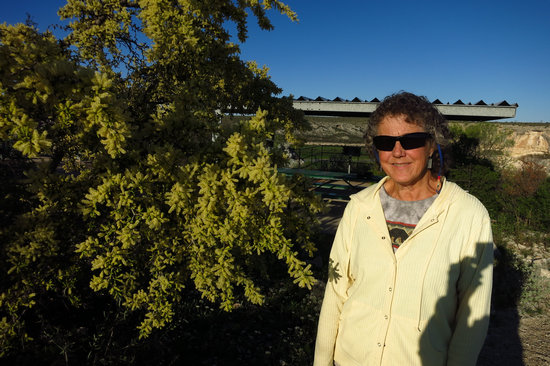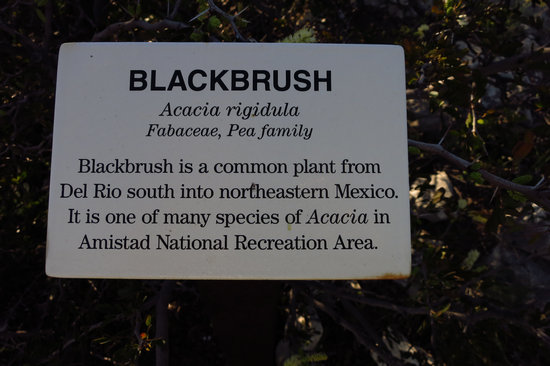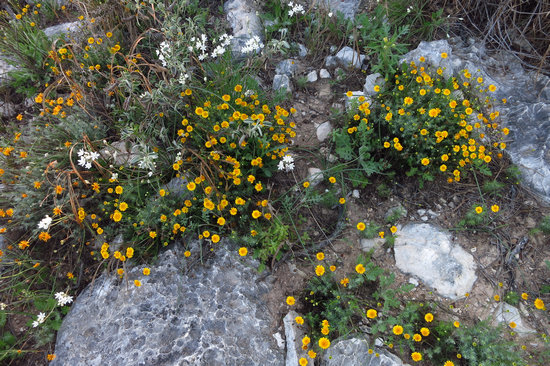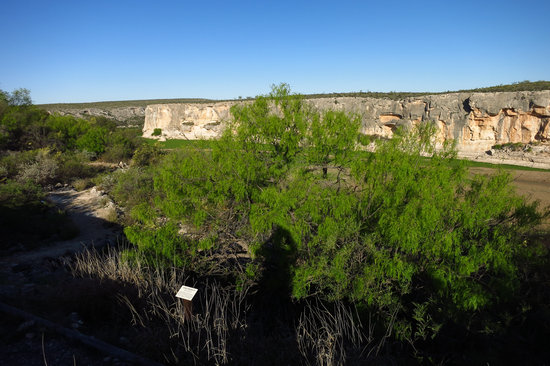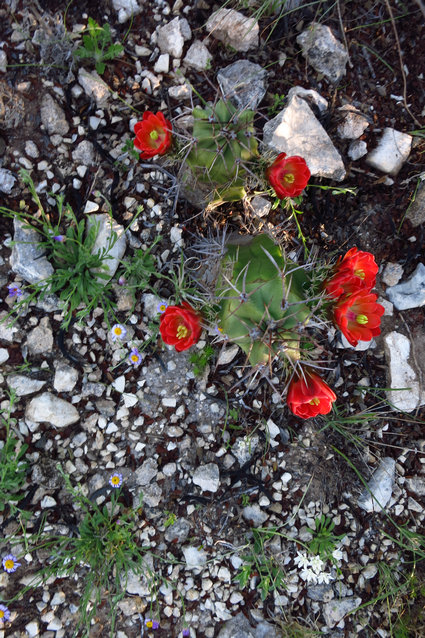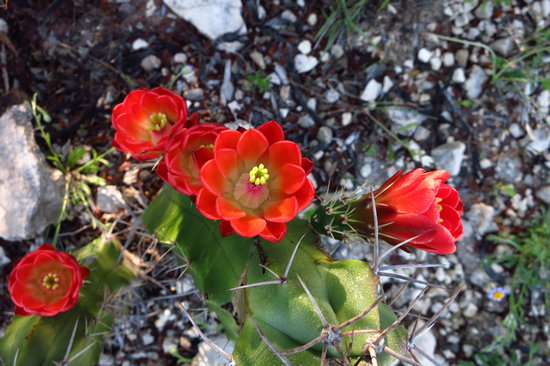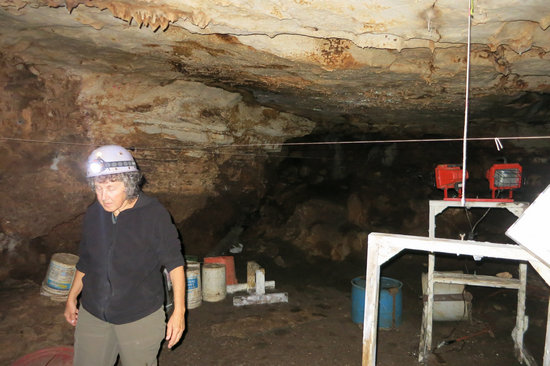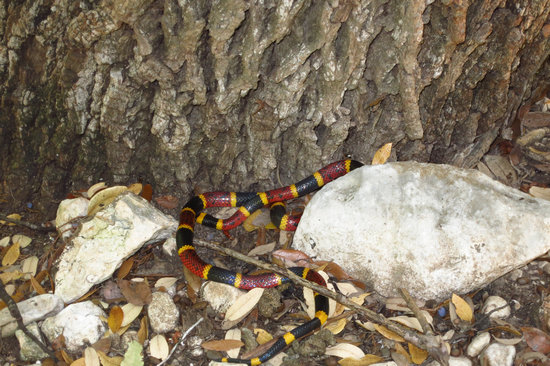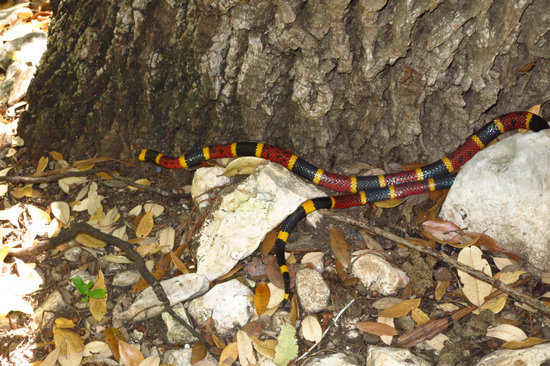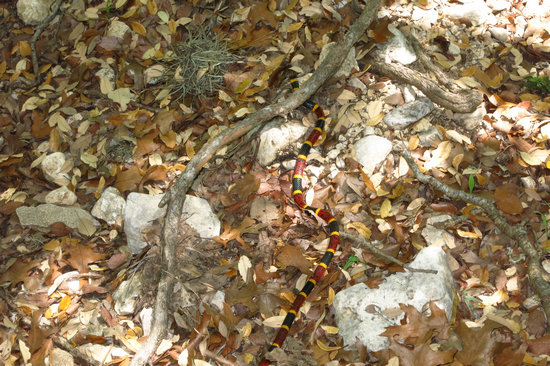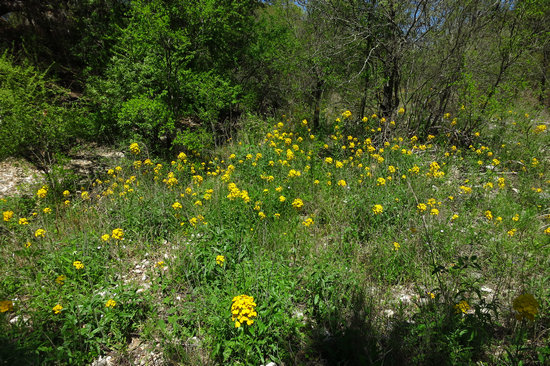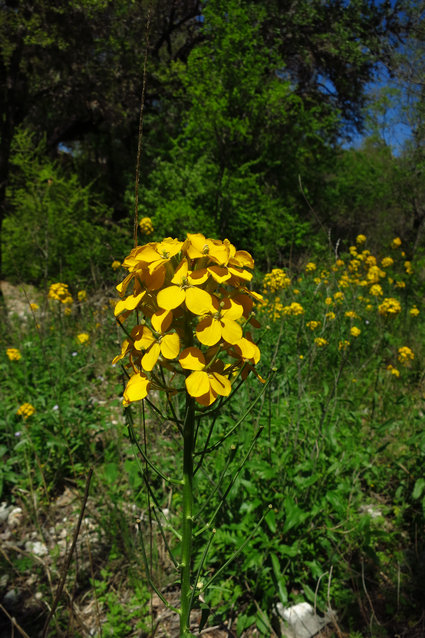Mike Breiding's Epic Road Trips March - 2015
Texas Wildlife: Dead and Alive
Wildflowers along the Pecos River, Friesenhahn and Robber Baron Caves in San Antonio, and a Coral snake sighting
TEXT
March 2015
When planning the drive back from Tucson Estates to Wheeling Betsy and I decided to make a couple of stops along the way.
Our first stop would be in San Antonio to visit long time friends there. That would be Geary and Sue and the added bonus of Aspen.
Geary generally has something interesting cooked up to do and this visit was no exception.
Our second stop was to be the Padre Island National Seashore and surrounding area. As luck would have it the AltDias would be in the area as well and we would be able to visit with them.
But, things did not go quite a planned. While in San Antonio Betsy got word here 97 year old father was failing and she decided it would be best to fly home immediately rather than take the week or so we had planned for the drive back.
So I left San Antonio the same day Betsy did and drove back home in two days plus 2 hours of another one. Not a fun drive but "such is life".
Below are a few pics of the sights we saw on our drive to San Antonio and the interesting time we had during our stay.
Click on the photos below for a larger image.
We stayed overnight in Fort Stockton and then took US 285 south to US 90 and then on to San Antonio. On this section of road we saw thousands of what I believe is Banana yucca (Yucca baccata).
This shot was taken on the Nature Trail along the Pecos River at the Amistad National Recreation area. We saw lots of goodies in bloom there as you will shortly see. Here is an overview of the area where we stopped for our short wild flower walk. Here you can see just how close we were to Mexico. Can you imagine trying to secure the border here? No doubt some would like to see towers with armed guards here. What a beauty! The common name "Banana Yucca" is explained below. Yucca baccata (Datil yucca or Banana yucca) is a common species of yucca native to the deserts of the southwestern United States and northwestern Mexico, from southeastern California north to Utah, east to western Texas and south to Sonora and Chihuahua. It is also reported in the wild in Colombia. The species gets its common name "banana yucca" from its banana-shaped fruit. The specific epithet "baccata" means "with berries." Banana yucca is closely related to the Mojave yucca (Y. schidigera), with which it is interspersed where their ranges overlap; hybrids between them occur. Source: WikiPedia We saw miles and miles of this shrub in bloom. This shot was taken near the picnic shelter. Common indeed! And, as I can attest, rather undistinguished when not in bloom. The cliffs in the background are 100 million year old Devils River limestone. The Pecos river has cut 300' down through solid rock. The Pecos joins the Rio Grand just to the left and the cliffs beyond are in Mexico. Spring has sprung here in west Texas and we saw lots of wild flowers which were new to us. Candelilla! I first saw this in Mexico where it is more common. There it is harvested and processed to make a wax which is used in both foods and cosmetics. The lacy leaves of the Honey mesquite (Prosopis glandulosa) add a lot of lush greenery to the landscape. We were lucky to see a few Scarlet hedgehog cactus or Claret Cup in bloom. The scientific name is a real tongue twister: (Echinocereus coccineus var. paucispinus). WOW! Now we go underground... When Geary suggested we join a group from Concordia University at Austin on a field trip to Friesenhahn Cave I jumped at the chance and drug Betsy along with me. Here Geary waits his turn to go down the 30' foot ladder to the cave floor. One of Concordia University Texas' most valued properties is the famous Friesenhahn Cave in San Antonio. Considerable work has been published about prior research at the Friesenhahn Cave and at least one publication has identified this site as "one of the most important paleontological sites in the United States" (Veni, 1988). Besides the La Brea Tar Pits in California, it is believed that no site in the United States has yielded a greater variety of significant Pleistocene vertebrate fossils. From excavations conducted by the University of Texas at Austin over 40 years ago, the Friesenhahn Cave has yielded over 4,000 isolated teeth and bones of more than 30 genera of ice age mammals, reptiles and birds. Especially noteworthy from the Friesenhahn Cave is the holotype specimen of Geochelone wilsoni, a recently discovered species of turtle which is represented by only a very few specimens worldwide (Milstead, 1956). Also noteworthy are well-preserved specimens of a sabertooth cat Homotherium serus and a long nose peccary Mylohyus nasutus that were excavated from this site in the 1950's. These are on display at the University of Texas Memorial Museum and its Bulletins 1 and 2 pertaining to their excavation are available from the museum (Lundelius, 1960) (Evans and Meade, 1961). As far as caves go Friesenhahn is not much to look at. But, this cave is not known for it's miles of passages or fabulous speleothems. Here is Friesenhahn's claim to fame. The scimitar-toothed cat Homotherium serum lived in Texas around 20,000 years ago but ranged widely in North America for almost 2 million years. These rare fossils are the complete skeletons of juvenile scimitar-toothed cats, or young kittens. The earth was not disturbed after the kittens died, so the fossils are well preserved. Friesenhahn cave was well known to a few paleontologist for it's treasure trove of both Scimitar-toothed cat and mastodon bones. When Dr. Larry Meissner learned the cave property and the surrounding 800 acres was going to be sold for development he was able to convince the owner, a member of The Lutheran Church—Missouri Synod whose daughter was a student at Concordia to donate the property. Concordia got access to the cave for study purposes in 1996 and acquired legal ownership in 1998. The total property is about 3.5 acres. This insured it's preservation and would allow ongoing work to be done in the future.
US 90 dips south very close to the Mexican border and crosses the Pecos River just a short distance from where it joins the Rio Grand.
There were about 20 students, faculty and guests and it took a while to enter and exit the cave.
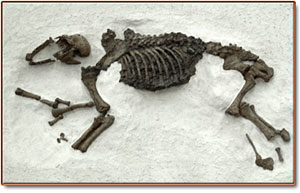
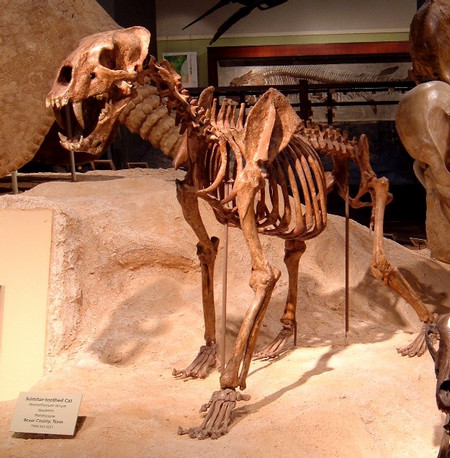
Source: WikiPedia.org
Another look at the skeleton of the scimitar-toothed cat found in Friesenhahn cave
.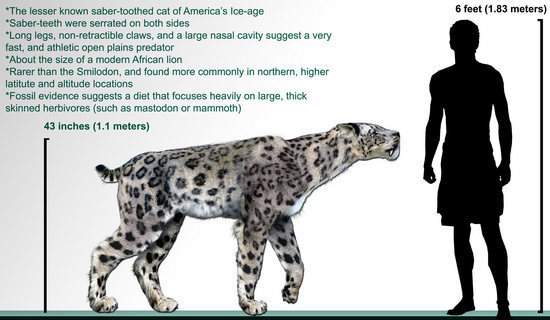
Source: WikiPedia.org
Not a promising outcome for this match up.
After our interesting visit to Friesenhahn cave we all headed over to Robber Baron Cave.
Robber Baron Cave is an extensive maze cave with numerous interconnecting passages. The cave is in a highly urbanized area and has been regularly visited for the last century including a period when it was operated commercially. As a result the cave has been heavily impacted including many areas of vandalism and graffitti.
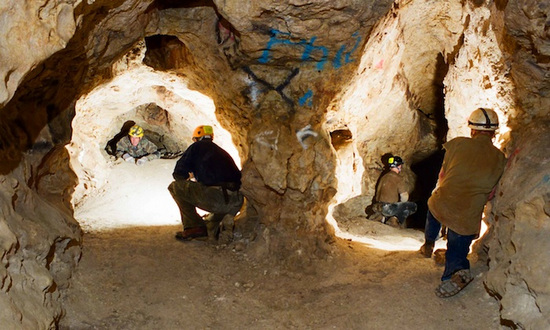
Photo by Jim Jasek
Robber Baron Cave is one of the most significant of the over 500 Bexar County (San Antonio), TX caves. It is the longest known cave in the county with 5340 feet (1627.5 m) of mapped passages. This cave has many interesting features including a large sinkhole entrance, a geologically complex two-dimensional maze of passages, a rich history, and several unique species, which live only underground.
I am used to caving in Appalachia where one generally gets cold and wet. Not so in this Texas cave. It was hot and dry and for added pleasure it had a high concentration of CO2 which made it feel rather oppressive.

Now you can see why Robber Baron is referred to as a maze cave. Large maze caves are very easy to get "lost" in.
We all had lots of fun making our way through the various passage types. But I have to say I was glad to exit. The hot, stuffy air was starting to get to me and make me a bit uncomfortable.
Our next trip was exploring some stream beds for various karst features Geary was interested in seeing.
We did not find any karst goodies but we did find a serpentine delight.
Geary spotted this beautiful Coral snake by stepping right over it.
New World coral snakes possess one of the most potent venoms of any North American snake.
However, relatively few bites are recorded due to their reclusive nature and the fact they generally inhabit sparsely populated areas. According to the American National Institutes of Health, there are an average of 15–25 coral snake bites in the United States each year.The bite of a coral snake may soon be more dangerous, in part because bites are so uncommon. Production of coral snake anti venom in the United States ceased because it is not profitable.
Source: WikiPedia
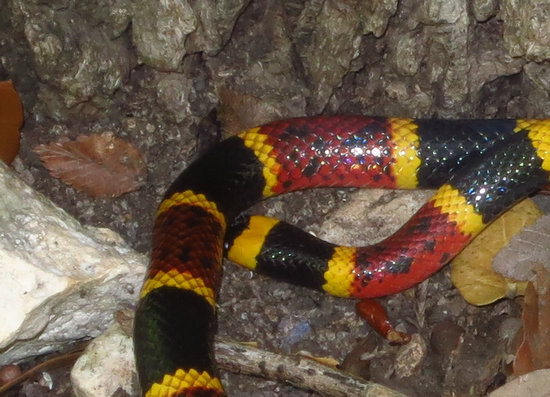
Note the small head. Fortunately this makes it difficult to get a bite on anyone.
But, it does happen.
After being pestered by a bunch of shutter bugs the poor thing was finally able to seek refuge under and old stump.
What a treat to see this critter!
One of the stream beds we walked through was awash in yellow flowers.
Yet another Texas beauty I cannot put a name on. Can you?
WV Rod identified this as Prairie Rocket (Erysimum capitatum).
~ FINIS ~




